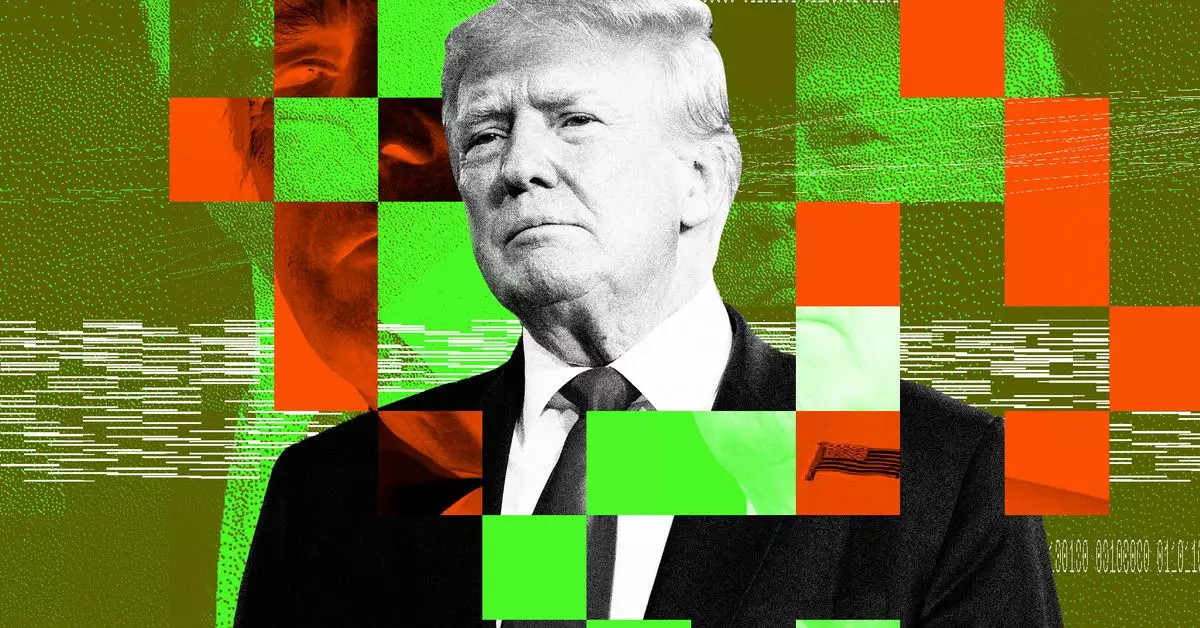The recent emergence of World Liberty Financial has captivated attention, especially given its associations with high-profile figures such as former President Donald Trump and his sons. Their bold declarations regarding the transformative abilities of this cryptocurrency platform, aimed at liberating the average American from the grip of traditional financial systems, raise significant questions that demand scrutiny. While the promises are grand, many uncertainties linger, particularly surrounding the core operations of World Liberty Financial.
The leading figures behind World Liberty Financial have boldly claimed that their platform will offer unprecedented opportunities to those disenfranchised by the conventional banking system. Trump, in his typical fashion, took to Truth Social to boast about how this initiative could free everyday Americans from “the big banks and financial elites.” Meanwhile, Donald Trump Jr. has been vocal about the potential benefits for unbanked and debanked individuals during discussions on various platforms, including X. Despite the hype, the absence of a concrete outline detailing how these lofty goals will be realized is glaring.
The sales pitch is compelling, yet it lacks substance. There is an enthusiastic tone that suggests a revolutionary approach, but the absence of specific mechanisms or strategies to achieve these outcomes remains unclear. Without a foundational understanding of what World Liberty Financial actually offers, the purported advantages can seem more like a mirage than a tangible reality.
Recently, World Liberty Financial announced that sign-ups for its service were open, albeit restricted to a select group. Accredited investors in the U.S. and non-U.S. persons can initiate the KYC (know-your-customer) process to gain access, a protocol that adds an additional layer of complexity and exclusivity. The decision to limit participation to a specific demographic raises questions about the company’s true intentions and commitment to its stated mission of inclusivity.
By establishing a whitelist that effectively excludes many potential users, the initiative appears to cater more to wealthier individuals and entities rather than the underserved populations it claims to champion. This contradiction between the messaging and the actions of World Liberty Financial creates skepticism about its genuine objectives.
One of the most significant issues surrounding World Liberty Financial is the opacity inherent in its operations. While some information has surfaced—such as its intention to promote the adoption of stable coins and decentralized finance—critical details remain elusive. According to financial sources like CoinDesk, the platform is slated to utilize Ethereum and Aave’s decentralized finance architecture, centering operations around a governance token branded WLFI. Yet, the specifics of these technologies and how they will function in practice have yet to be clarified.
Adviser Corey Caplan’s remarks during promotional events further muddied the waters. Initial reports indicated that a sizeable portion of WLFI tokens would remain with founding members and service providers, only for Caplan to assert that a different percentage would be sold publicly. This inconsistency, coupled with references to “fake news,” indicates a troubling dynamic where transparency is sacrificed, leaving potential investors in the dark.
From a regulatory standpoint, World Liberty Financial has not shied away from placing the blame for its limited accessibility on the burdens imposed by U.S. regulations. By attributing its whitelist structure to “outdated policies,” the platform suggests that legislative frameworks hinder broader participation, particularly for those who are unbanked. Yet, this defense does not fully absolve the company from addressing how it plans to navigate these regulatory waters.
According to the U.S. Securities and Exchange Commission, accredited investors are defined by strict financial criteria, essentially creating barriers for many individuals who would benefit from cryptocurrency innovations. While acknowledging that approximately 24 million U.S. households qualify as accredited investors presents a favorable perspective, it starkly contrasts with the many more who remain excluded from financial opportunities.
Given the glaring dissonance between World Liberty Financial’s proclaimed mission and its practical offerings, the questions surrounding its operational viability and integrity remain. What is this platform truly intending to achieve? Only time will reveal whether it can substantiate its grand promises or if it will fade into the annals of cryptocurrency hype without making a meaningful impact.


Leave a Reply